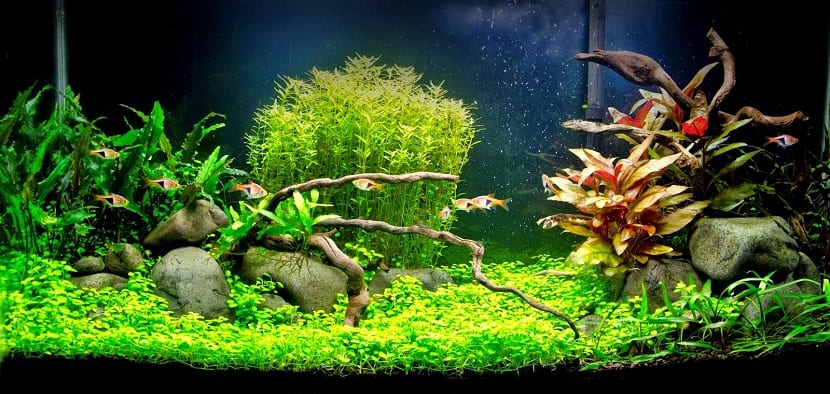
When you have an aquarium, you have to decide which plants you are going to place both for its beauty and for the usefulness and functionality they have for the life of your fish. Sometimes there are so many varieties of plants (both original and artificial) that it is difficult to choose the right ones for your aquarium.
Here we are going to teach you some of the most outstanding plants for all types of aquariums and some that are more specific to certain species. Do you want to know more about aquarium plants?
The best aquarium plants
When we start with the decoration of our aquarium, it always comes to mind to recreate the fish tank as close as possible to the natural ecosystem where the fish lives. For this, it is necessary to have good aquarium plants. There are plastic aquarium plants and natural ones. If you are going to have real plants you must know their care and what species de peces you are going to have so that they can be in harmony in the same ecosystem.
In this article we are going to talk to you about the best aquarium plants and we are going to give you some options so that you can buy the one that best suits you.
Next we are going to show you some of the most demanded models and what else can be adjusted to most of the types of aquarium that people usually use.
pietypet
We start with the classic plastic aquarium plants. This model comes with an aquarium plant set that will fit a 5-15 gallon size aquarium. They are quite vivid and detailed in color so you can add some life to the tank. Try to simulate what are real plants so that the fish's environment is as close to its natural ecosystem as possible.
This model includes an aquarium ornament and 8 assorted pieces of green plastic plants for the aquarium. The plants come in different sizes ranging from 5 to 18 cm. This material is not toxic at all, so if the fish bit it by accident, nothing would happen. It is composed of a plastic, resin and a ceramic base. It is used for both fresh and salt water aquariums since it is not affected by the pH of the tank.
All plants come with a small pedestal where to place them so they will not float in the aquarium. The ornament is quite realistic and can provide the fish with a little shelter. You can buy this model by clicking here.
JDYW
This is another model that has quite durable and harmless features for the fish. It is a plastic plant whose base is built with ceramic and does not have a bad smell. It does not cause harm to fish or the aquatic environment. It also won't rust or rot. It is a very realistic plant and very well imitates the movement of plants when they are in water.
It has a good height for the aquarium with a base that guarantees the total safety of the plant and allows the fish to have a place to play and hide. Due to its morphology, it is quite easy to clean when dirty. You just have to soak them with warm water to remove any debris they may have. It is 52 cm in size and weighs about 270 grams. The plastic is designed so that the plant can remain stable where you place it. You can buy this plant by clicking here.
luoem
This is one of the perfect plants to place in the bottom of aquariums. It is what helps to compose the background landscape. It has a material green color. It is made of plastic and has dimensions of 20x8x16cm and a weight of 200 gr. It can be used for both fresh and salt water and is non-toxic. It can be washed very easily and is an ideal decoration for the fish tank.
It is designed with a ceramic socket that makes it stable. It is quite durable and environmentally friendly. Does with a model like this by clicking here.
Marina Naturals
This model is quite realistic and has good light fastness. It is one of the best models that we can buy if we want to give it a more natural touch. to our aquarium without the need for real plants. It is quite soft to the touch and completely safe for all types of aquarium.
It has a green and red color to the leaves. It can serve as a good combination with other plants that have other more striking colors to give it a game of colors that can also be combined with those of the fish. Get hold of it by clicking here.
Types of aquarium plants
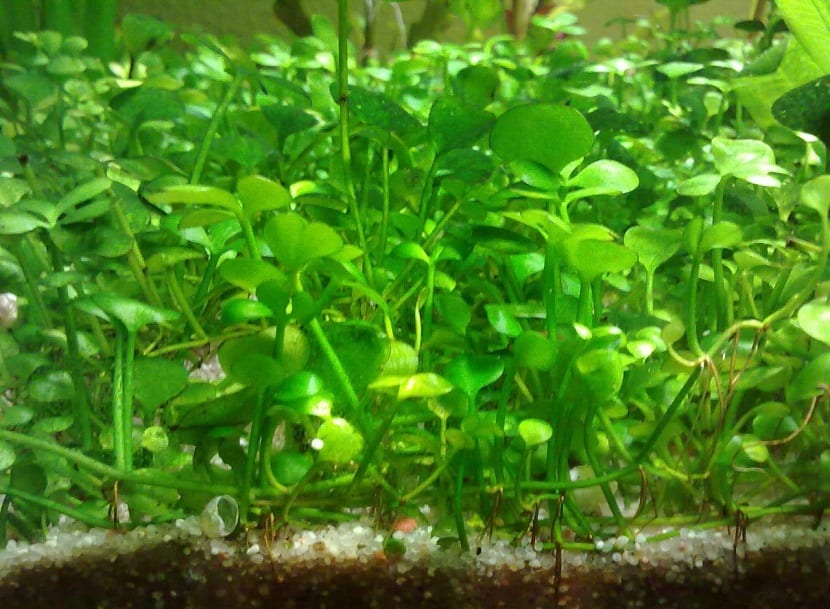
When we want to obtain plants for our aquarium we have the difficulty between so many strange names and sometimes, it is difficult to know if a plant will be good for our fish. The plants (if they are real) also require some conditions such as clean water, a certain lighting, a suitable size of the aquarium, etc.
One of the problems we encounter when choosing plants for our aquarium isI know that almost all of them come with the scientific name. Thus it is much more complex to recognize them. However, it is not something that should scare us, since little by little we will get to know them and each time we will become more familiar with them.
We will begin by describing some types of plants based on the difficulty they have to maintain them and their aesthetics, which after all is the mainstay of the aquarium plant.
Plants for the cycling process
The first thing we have to do when starting our new aquarium from the beginning is to establish a bacterial colony that performs its cleaning functions. This function is based on transform waste into compounds that will be harmless to our fish. This cycling process takes about a month, so during that time we will not be able to introduce any fish into our aquarium, since the water will be toxic for them.
During the cycling process, we can introduce plants that help us improve the process by speeding it up. Plants consume ammonia, nitrites and nitrates which can be toxic to fish. The most suitable plants for this process are those of rapid growth, that oxygenate the water and are great consumers of nitrates. They do not require great care, they are easy to maintain plants.
For example, we find two types of plants that work well for the cycling process:
- The first is the fox tail (Ceratophyllum demersum): It is a very easy plant to care for, grows very fastIt requires little lighting and a CO2 contribution is not necessary.
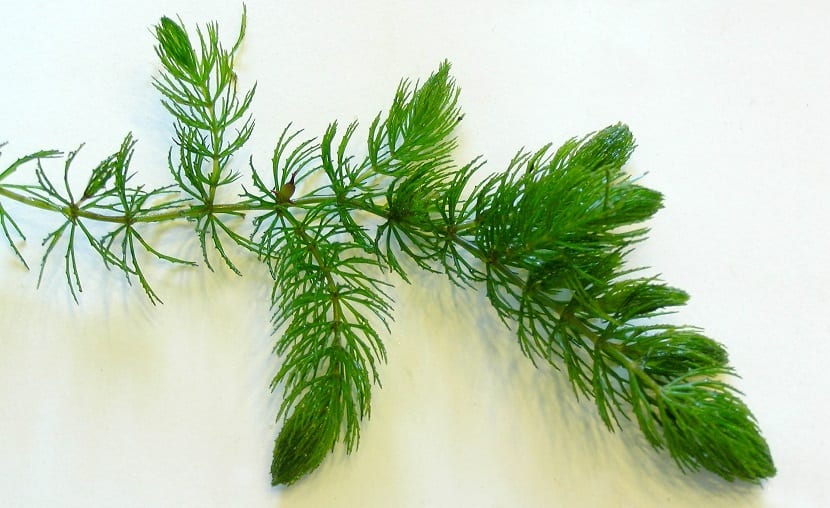
- The second is the ambulia (Limnophila sessiliflora): It needs a little more light than the previous one, but it is also easy to care for, grows quickly and is more attractive.
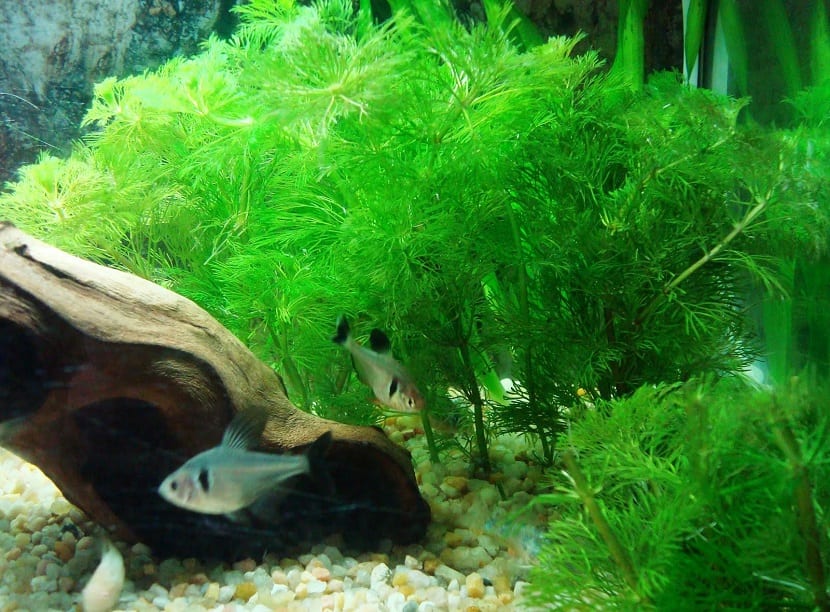
Plants that require little light
If you are new to the world of aquariums, it is best to start by having plants that require little light. Normally, these plants require less care and less maintenance (if we are new, imagine taking care of the fish, as well as worrying about the plants). These plants thrive just by having them submerged in the aquarium. These will feed on the waste of the fish (normally they are nitrates), part of the food that we add (phosphates) and will hardly need lighting to grow. A little general fertilizer will help them to grow stronger, which will have to be added periodically but without any other type of control.
The fertilizers that we would have to use would be those that provide potassium and micronutrients, dosing once or twice a week:
- Aquili basic liquid fertilizer: simple and inexpensive fertilizer
- Seachem Florish fertilizer: most advanced fertilizer from the prestigious Seachem brand
Among these plants that require little light we find:
- Java fern (Microsorium Pteropus): Present in most aquariums by its resistance and its ease of maintenance. Moderate growth and does not require CO2 contribution.
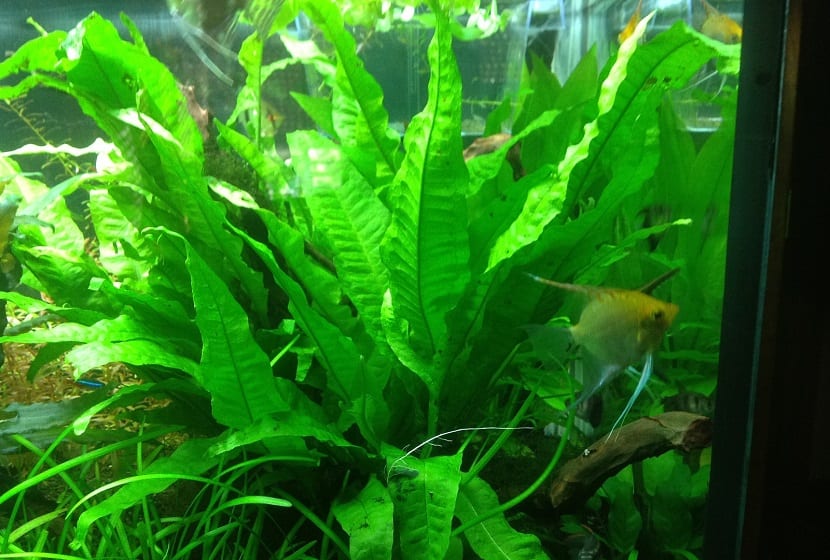
- Anubia barteri: It is the variety of Anubias most used. It does not require any care and its leaves are large and rounded.
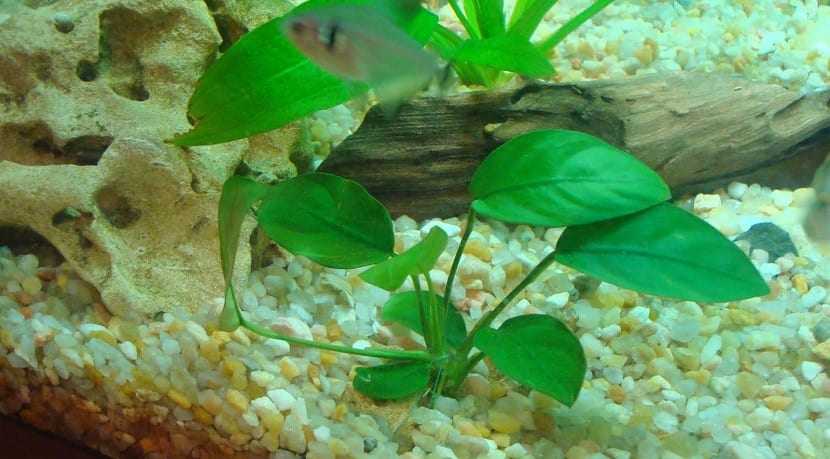
- Hygrophila polysperma: Resistant plant, with small leaves and a stem that can grow very tall. With good lighting, its upper leaves turn reddish in color. It serves as a potassium deficit marker.
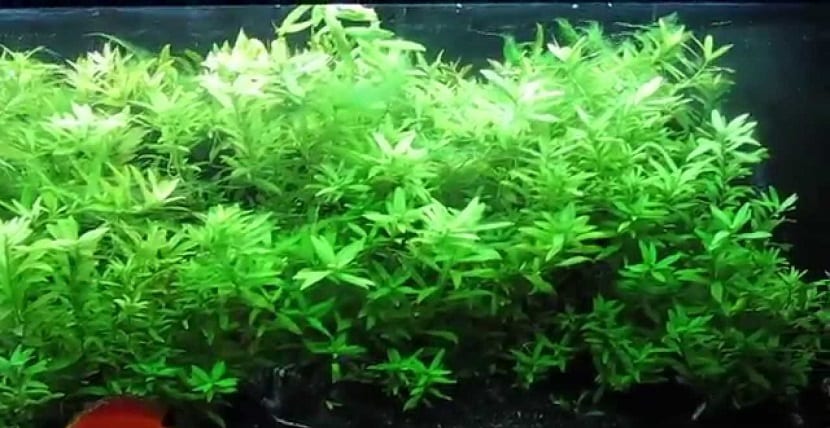
- Vallisneria Americana Gigantea: Plant with ribbon-shaped leaves, this variety has the widest leaves. It spreads easily through the substrate by removing new stolons, good for creating curtains in the bottom of the aquarium.
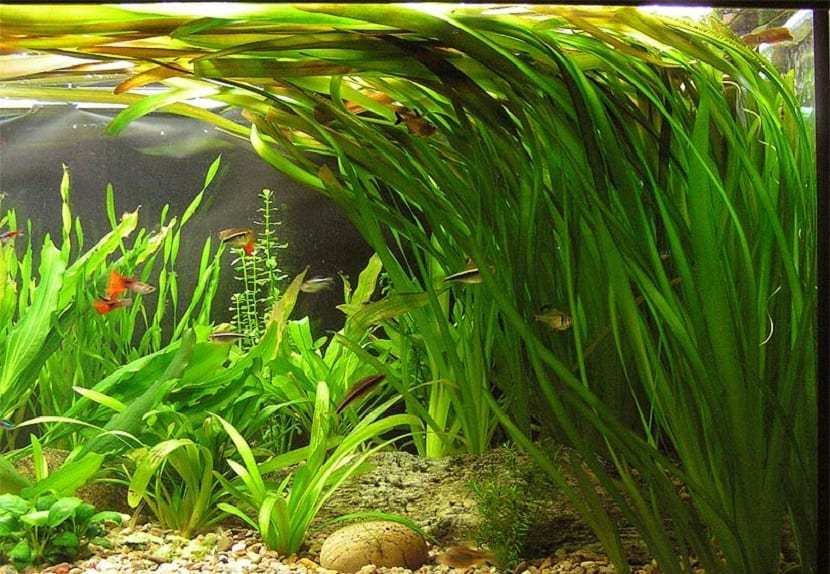
Aquarium plants according to the position they will have
At first, if we are new to this world of aquariums, any plant is enough for us, and with seeing our healthy fish we are happy. However, the more we get into the world of aquariums, the more types of plants we want to place. In order not to place the plants without any sort or priority, we are going to make a list of plants depending on their size and the position they occupy within the aquarium so that they are optimal.
Forward position plants
The front part of an aquarium should be the most attractive, since it is the one that will be shown the most to the public or simply the one that is seen the most. Thus, The plants that we choose in the front part must be more showy and we will choose them in more detail. The rest of the plants "protect" them, so they tend to be quite the protagonist in any aquatic landscaping setup.
The most beautiful plants for the front area of the aquarium are the low-growing upholstery. These plants coat the substrate in a uniform way to create beautiful meadows. The problem is that, in general, these plants are more demanding. They require more light, a more periodic fertilizer, require the addition of CO2, etc. Everything beautiful is paid more. Although there are also upholstery plants that do not require so much care, so we will not have to make large investments.
Here we leave with some of the most used upholstery plants:
- Sagittaria subulata: This plant does not require additional CO2 and neither does it require much lighting. It is the easiest upholstery plant to maintain. It reaches a medium height, it spreads through stolons with ease.
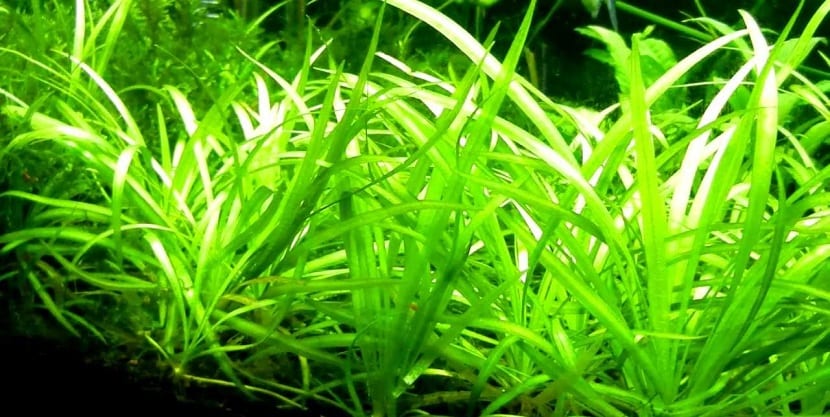
- Glossostigma elatinoides: This plant does require extra CO2 for its maintenance. It also requires high lighting. They have rounded leaves and It is widely used as upholstery for its beauty and its tiny size.
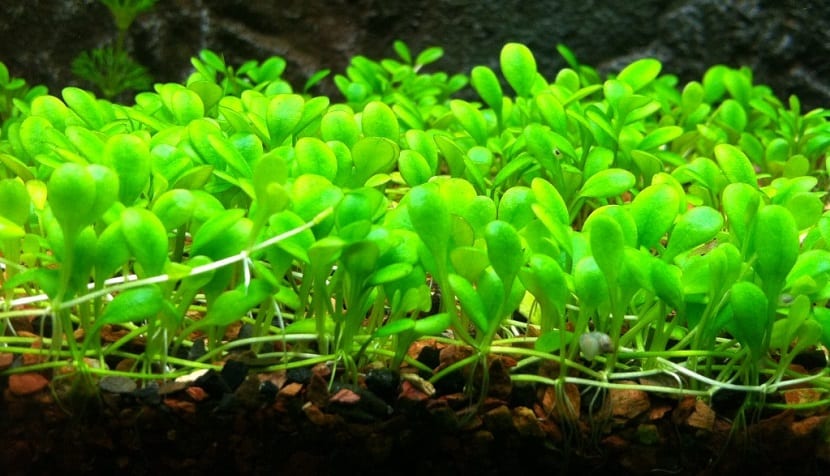
- Marsilea hirsuta: For this plant it is recommended to add additional CO2 and medium lighting. It spreads over the entire background, including areas with less lighting. It takes out 2 or 4 leaves depending on the amount of light that reaches it.
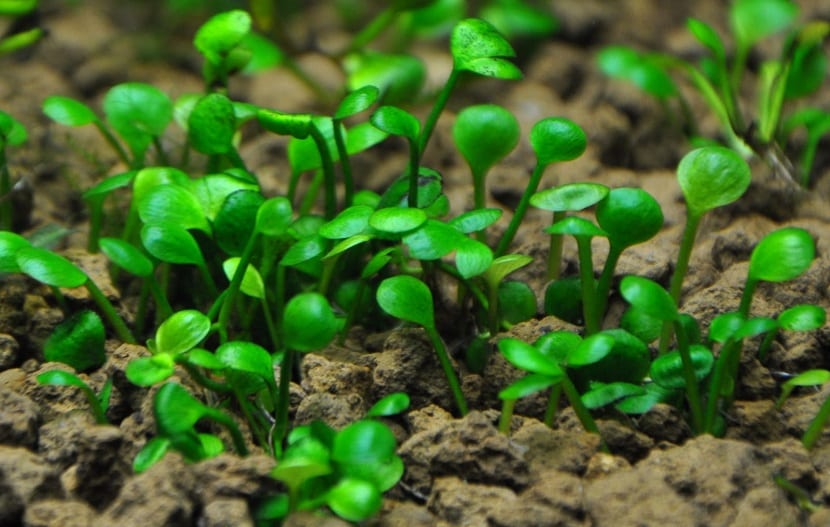
Medium height plants
Plants that grow to a medium height are used for various purposes. In the case of not having upholstery plants, We can use them to create bushy areas without hindering the rear area of the aquarium. They also serve to make them transition to the final area of the aquarium so that the change is not so pronounced. There are different types of plants of medium height depending on the requirement they have.
We put some examples:
- Staurogyne rubescens: This one does not require a lot of light, but it is advisable to add additional CO2. It is shrubby of medium height, it does not grow beyond 5-6cm.
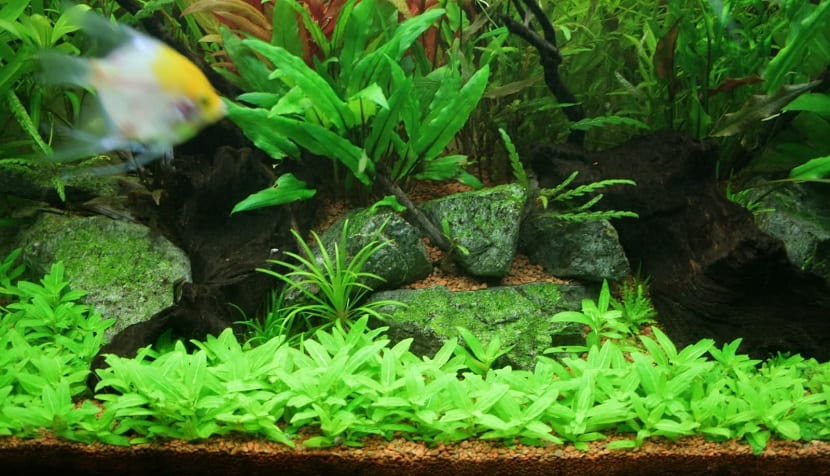
- Echinodorus Vesuvius: This plant does not require additional CO2 and has very curly leaves.
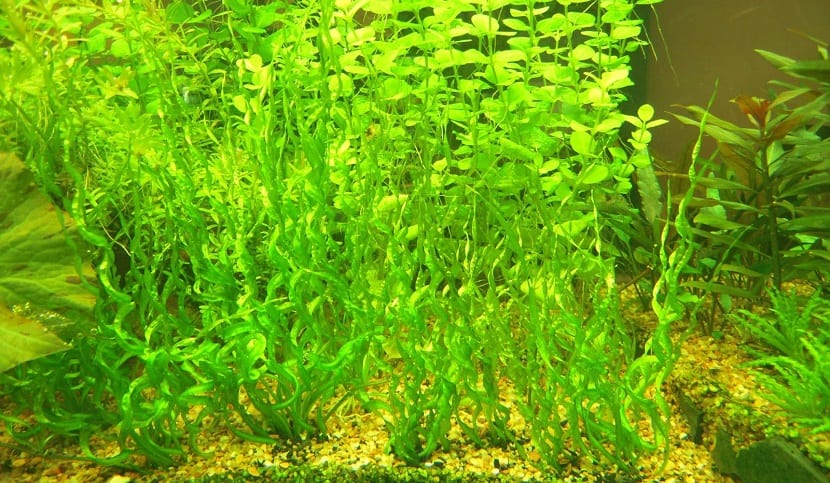
- Pogostemon helferi: Well-known plant in aquatic landscaping for its shape, completely different from the rest. It can be used as a mid-plan plant or even as an upholstery. It is advisable to add additional CO2 and requires a medium-high light.
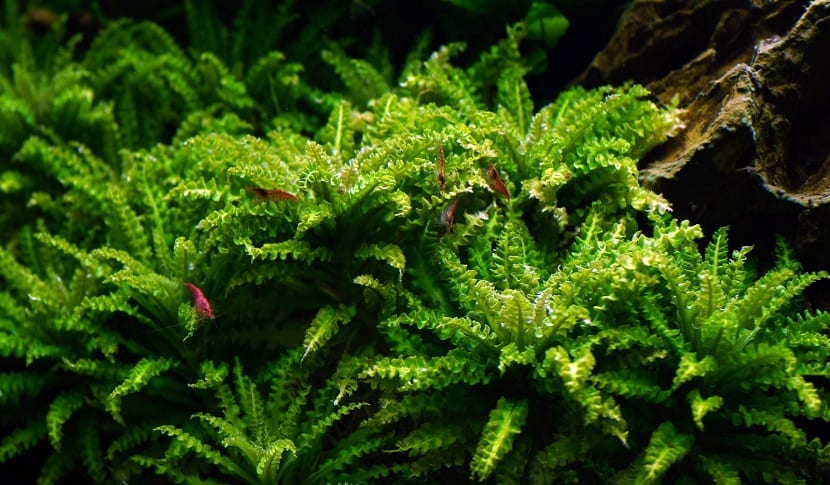
Anti-algae and aquarium plants with cichlids
There are aquarium plants that prevent the appearance of algae, since they grow very fast and consume nitrates from the environment, which is what normally causes algae growth. The foxtail mentioned above works perfectly as an anti-algae plant, because it grows very fast and consumes a lot of nitrates. It is a plant that will have to be pruned many times because of how fast it grows.
As for people who like to take care of African cichlids, they have to know that these fish feed on aquarium plants. Some like to scratch the substrate which makes the plants loosen, or even due to their swimming they can damage and loosen them.. Therefore, plants that adapt to this type are needed. de peces.
Among them we find:
- Java fern (mentioned above)
- Anubia barteri (also mentioned above)
- Amazon sword (Echinodorus amazonicus): A well-known plant in aquariums for its easy maintenance, it has elongated sword-shaped leaves. It does not require external CO2, they cling well to the substrate and do not need much light.
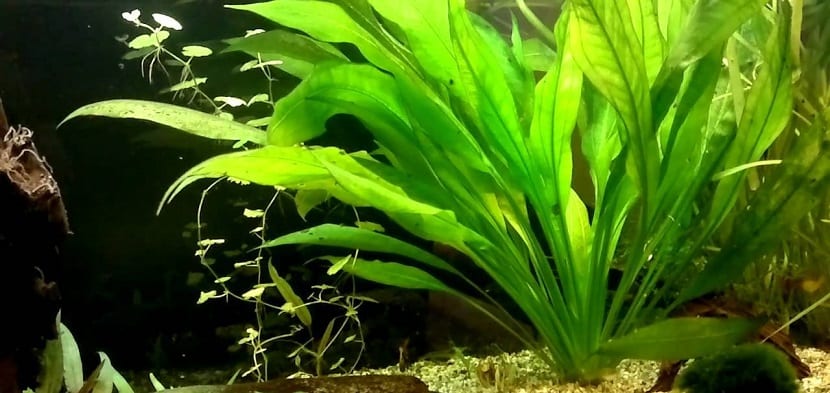
Cold water algae
When we mention cold water, we mean Those aquariums that do not have a heater. In this type of aquarium the fish are usually vegetarian, so we will have to take into account that the plants that we can put must be resistant.
Here are some plants that withstand cold water:
- Fox tail
- Java fern
- Anubia barteri
- Bacopa caroliniana: Plant with a fleshy stem and leaves, quite resistant and suitable for cold waters. With good lighting, its upper leaves turn orange. It does not require external CO2.
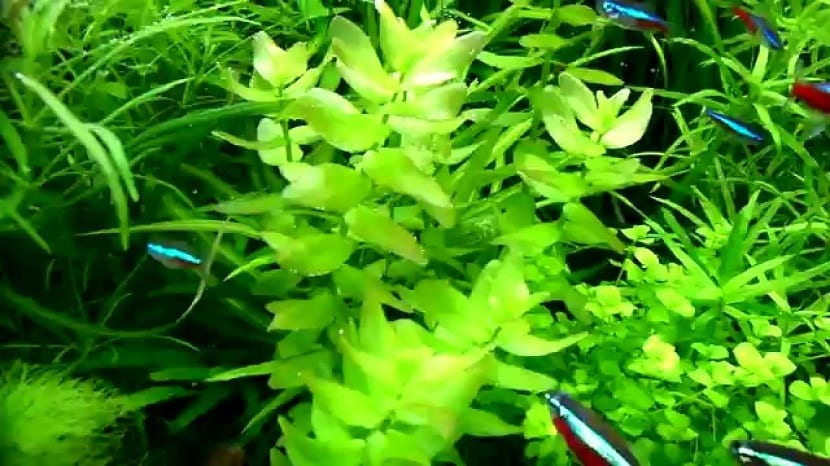
- Vallisneria Americana Gigantea
- Amazon sword
- Eleocharis Acicularis: Grass-type upholstery plant with medium light requirements, medium size that supports low temperatures. They do not require external CO2.
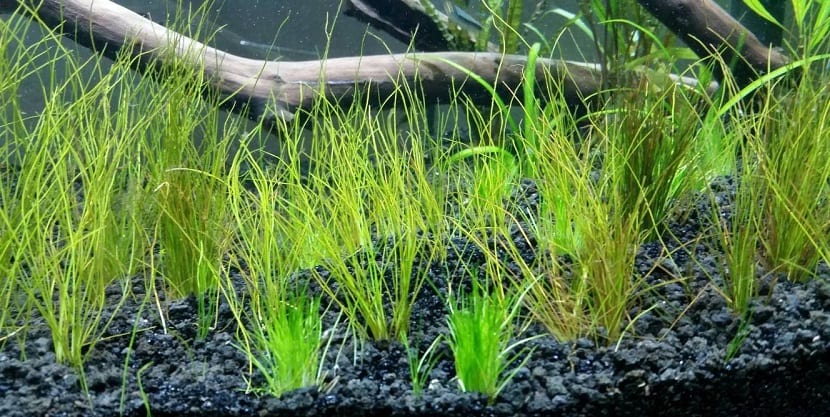
There are many plants that exist for aquariums. We have only focused on the most common and used, however, they exist in all shapes and colors. What's more, It is important to find out the type of plant that certain fish require, because there will be some who need a special type of plant in order to survive.
Upholstery plants
Covering plants are those that go in the front of the aquarium. Therefore, they must be the most attractive. They are the ones that will be seen with the naked eye. The plants that we choose and that are going to be placed in the front part must be the most showy. It is necessary to choose them in detail so that the ornamentation is optimized.
The best are those low bearing upholstery plants.. These can coat the substrate evenly and create beautiful meadows. In general, if they are real plants, they are the most demanding.
Plants without substrate
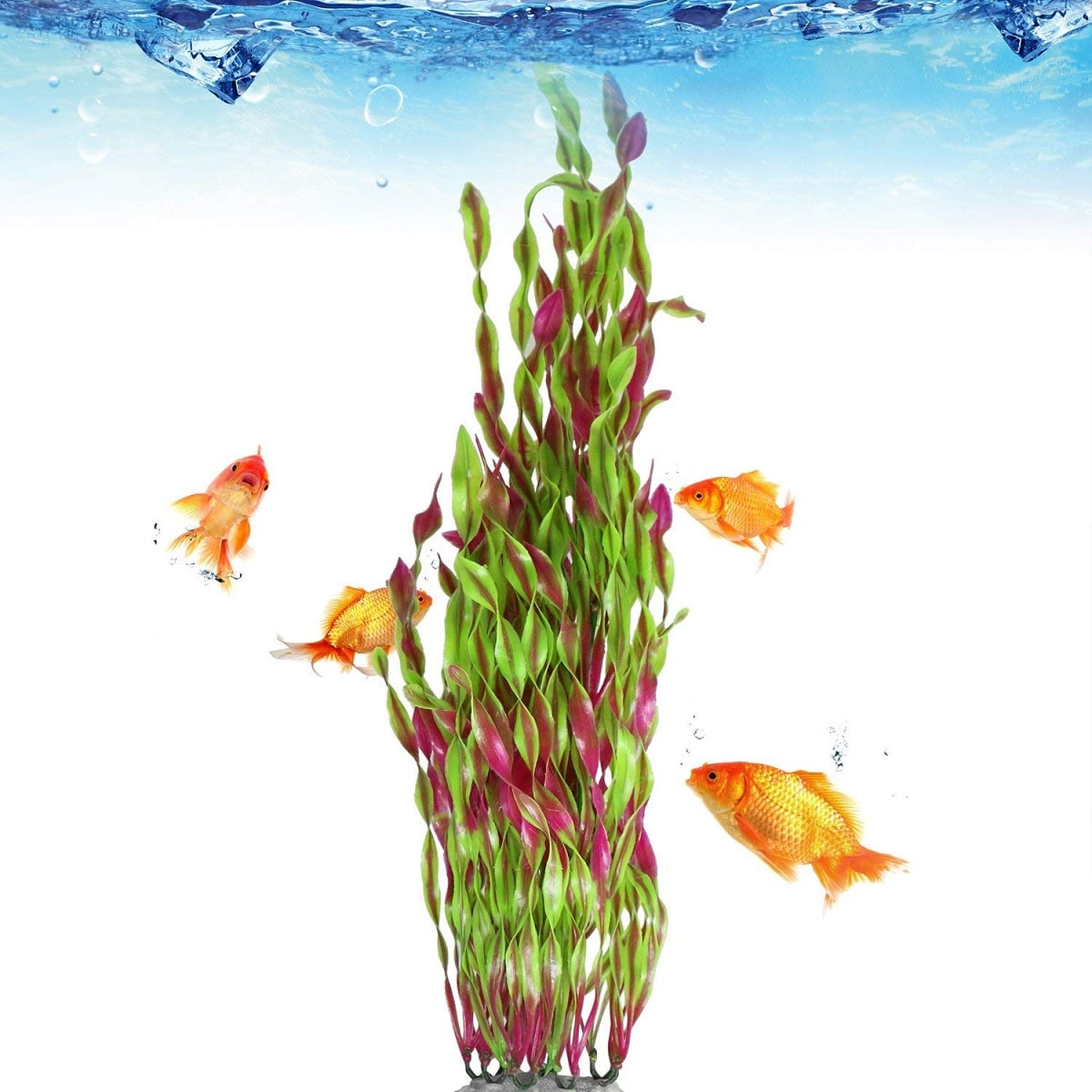
When we talk about a plant that does not have a substrate, we are referring to the fact that it does not need any nutrients. They can thrive on any inert gravel. They are plants that need to be planted if not that they root in different decorative elements. In this way, you can have a good decorative element with real plants if you need to have a substrate that you have to maintain with good quality.
Rooted plants
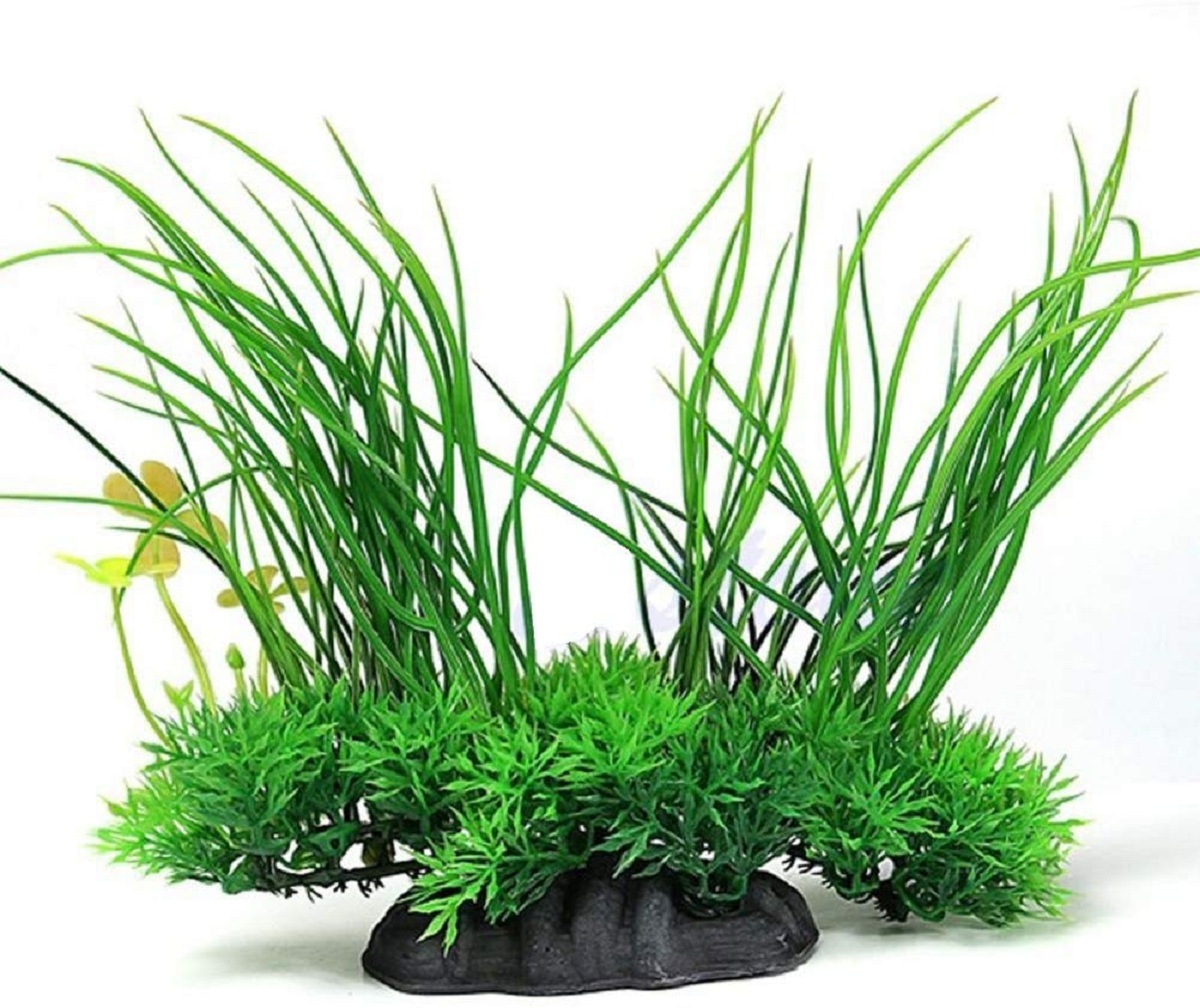
They are those that have already rooted both in wood and rocks. These are plants with a simpler system by adding natural decoration to our aquarium. With this type of plants we will not have to wait for their growth and they will have a great ornamental contribution.
Red plants
The red color always comes in handy for our aquariums because it provides a contrast between the green of the leaves. Among the red aquarium plants the most important are the following:
- Alternanthera Reineckii
- Ammania senegalensis
- Echinodorus Red Devil
- Cryptocoryne Albida Brown
- Echinodorus Red Diamond
- Echinodorus Ozelot
- Ludwigia Repens Rubin
- Echinodorus Hadi Red Pearl
- Echinodorus Fancy Twist
- Echinodorus Red Chameleon
Easy to care
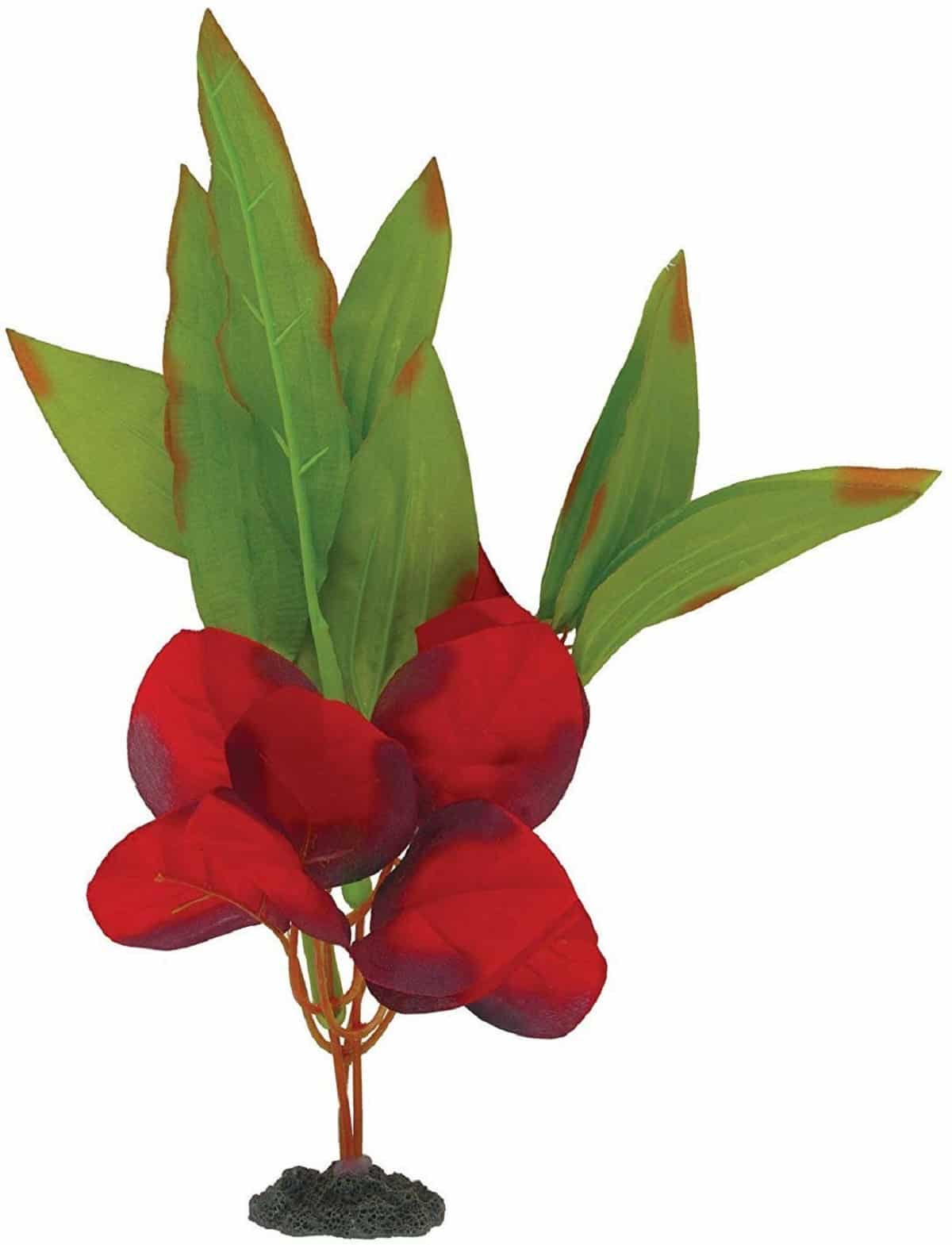
Many people are looking for easy-to-care plants when they bring real plants into their aquarium. Here is the list of the easiest to take care of:
- Cryptocorynes
- Echinodorus
- Anubias
- ambulance
- Vallisnerias
- Hygrophila polysperma
- Java fern
- Aquatic mosses
Oxygenating plants
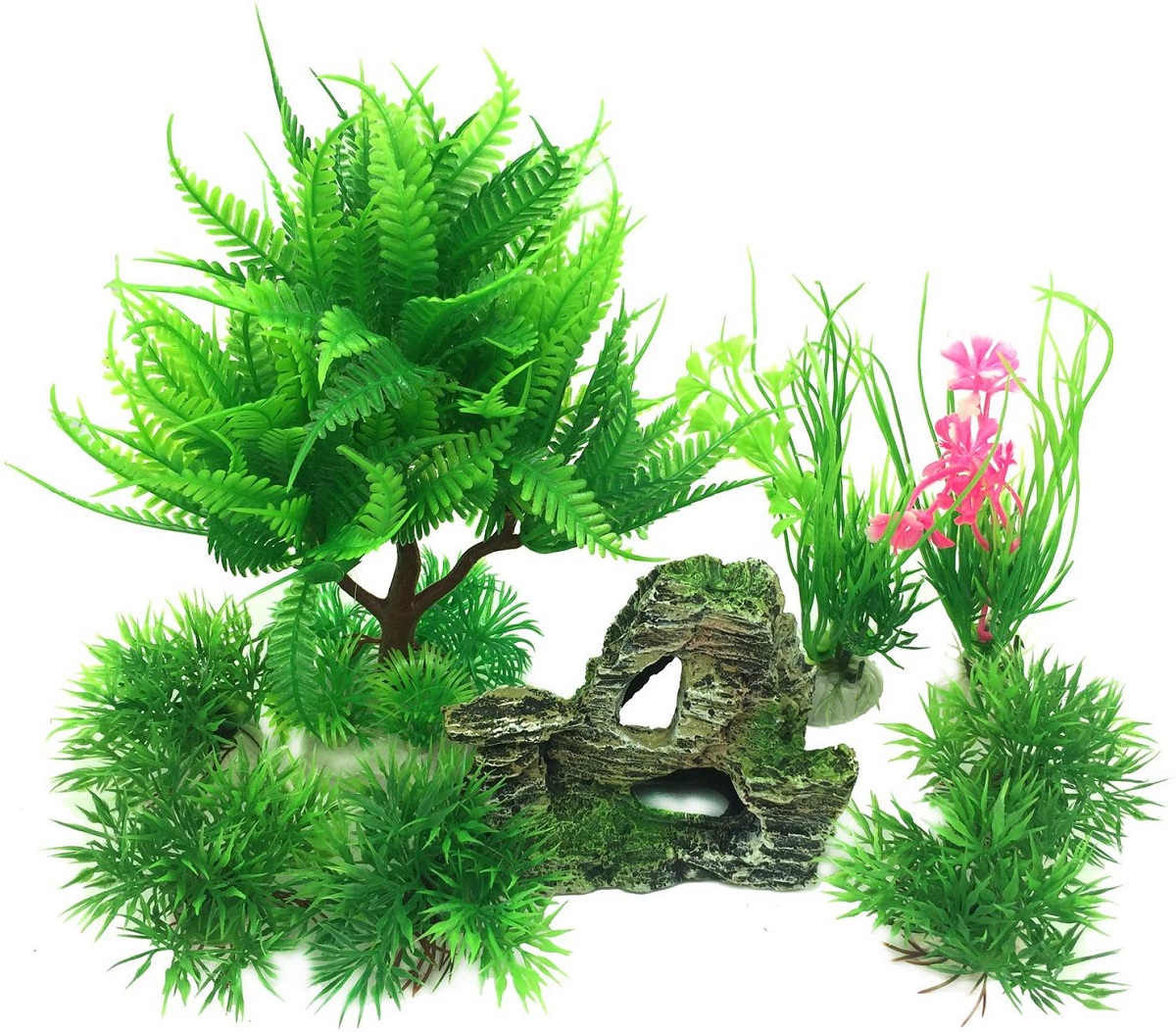
They are those that provide an extra supply of oxygen to the water. Aeration is important for maintaining good fish health. Here are some of the best oxygenating plants:
- Ceratophyllum demersum
- Egeria densa
- hottonia palustris
- Myriophylum brasilensis
- Myriophyllum aquaticum
- Orontium aquaticum
- Ranunculus aquatilis
- Vallisneria gigantea
Other Aquarium Plant Considerations
When we have an aquarium at homeIn addition to taking care of factors such as temperature, pH, acidity, among others, it is important that we pay attention to the plants that we have in our aquarium. These plants must remain in good condition, to avoid any type of health problems with our animals, or the proliferation of bacteria or fungi.
It is very important that plants that we have in our aquarium They are kept alive and in perfect condition so that the fish feel comfortable in their habitat, they can hide in them, or why not, feed on them. Keep in mind that the aquarium plants that have been planted inside an aquarium, must first of all be very fresh and full of life. It is for this reason that today we bring you some recommendations so that plants can fulfill their function in our pond.
As a first measure, it is necessary that, for the plants to be in very good condition, they have good amount of light and CO2. If any of these factors is not enough, I do not recommend that you apply fertilizers to the plants, since the substances could accumulate in excess, but you can add a little potassium to them in small amounts.
Brianda floating aquarium plants, as their leaves begin to appear to the surface, and are closer to the sunlight, they can block the light of the other plants that are inside the aquarium, so we recommend that you do not let them grow too large to that also the other smaller ones can enjoy the solar rays.
In the same way, I recommend using a type of gravel that measures between 3 and 5 millimeters since the one that is finer and smaller can suffocate the roots of the plant, causing them to rot and die. In the same way, although the pH of the neutral water is indicated, remember that plants prefer the one that is slightly acidic.
What care do aquarium plants need?
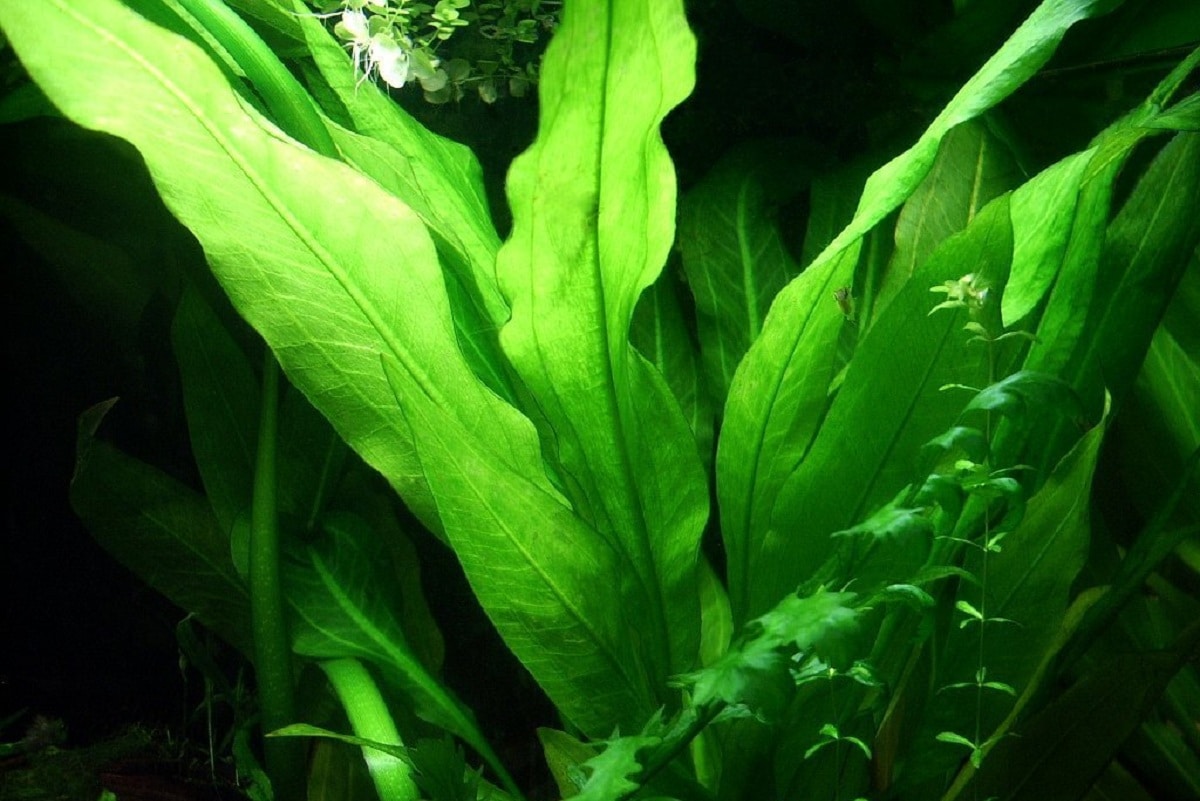
Aquarium plants need some main care to stay healthy. You have to adhere to some requirements and meet them. We are going to analyze one by one:
- Luz: the amount of light entering the aquarium is a fundamental factor. It must be quality light and sufficient quantity. Floating plants require less light because they are closer to the surface. The rest of the plants will need a little more light. For this, it can be both natural and artificial light.
- CO2: It is quite useful to apply it in the aquarium, not only because it is an essential nutrient for plants to photosynthesize, but it also helps to lower the pH of the water. This is necessary to generate good conditions for our plants. In addition, it helps us reduce the proliferation of unwanted algae.
- Fertilizers: If we have enough light and CO2 we have to add some type of fertilizer so that the plants have the necessary nutrients. You have to apply them slowly so that they do not exceed nutrients and are used by algae.
- Substratum: the substrate is not strictly necessary by the plants. In fact, there are plants that do not need substrate. However, this substrate can be easily obtained in any pet store and the plant will thank you as long as it needs it.
Why is it good to put plants in the aquarium?
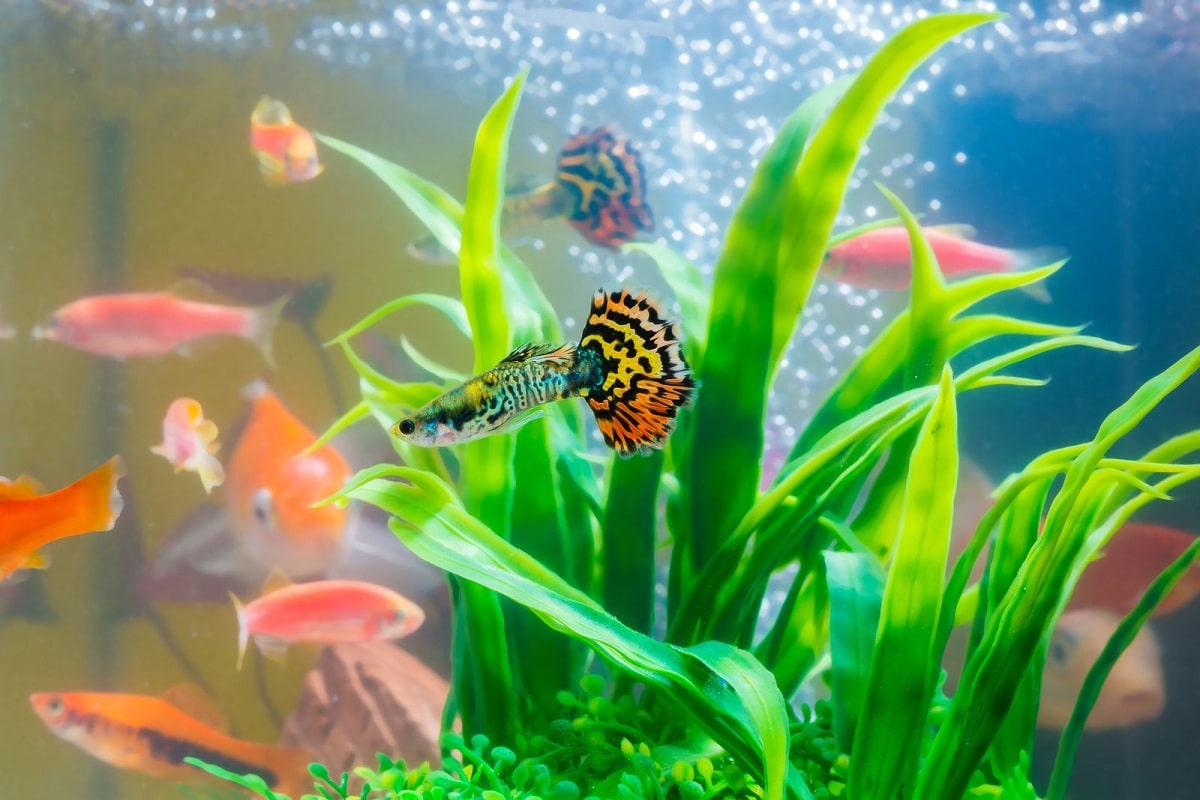
Placing plants in our aquarium can be a good idea for several reasons. As long as they are real plants, we can benefit from all the features it brings to our fish tank. Let's see the reasons why it is good to put plants in the aquarium:
- They are capable of consuming the toxic nutrients from our fish tank and helps the health of fish and the entire ecosystem.
- They provide oxygen to the water so it helps the fish to breathe well.
- They provide a part for the fish to play and at the same time serve as a hiding place for many of them.
- In nature, fish use plants for laying eggs. Therefore, in an aquarium they will also use these plants as a refuge for their young.
- When photosynthesizing, help control the proliferation of algae.
- It helps us to improve the aesthetics of the aquarium.
- We can create good landscapes.
As you can see, aquarium plants are a good choice for decorating and improving the quality of our fish tank. I hope that with these tips and this information you can learn more about aquarium plants.


very good post, it helped me to clarify some doubts, despite having experience in aquariums, you always learn something new, greetings
Greetings, thanks for the information, I want to know where to get the plants.
I am also interested in knowing where to get plants for my aquarium.
Could you help me?
Thank you